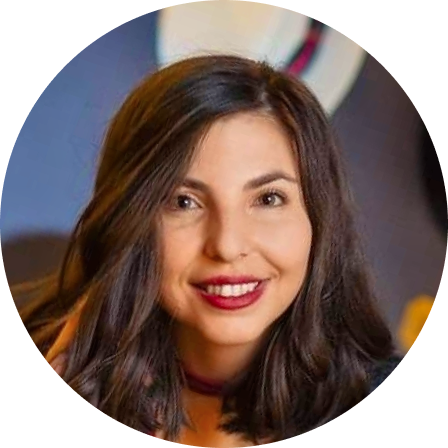If your business needs to forward text messages to an email address, it can be done in just 4 simple steps, especially with a modern VoIP phone system software like PBX.IM, which lets you automatically send incoming SMS messages directly to one or multiple email inboxes.
Whether you work in customer service, healthcare, legal, or simply need centralized visibility over team or client communication, forwarding SMS to email helps you:
- Keep a record of important conversations
- Improve response time and collaboration
- Ensure compliance and traceability
- Avoid losing messages across devices or personal phones
In this guide, we’ll walk you through what SMS-to-email forwarding really means, when to use it, why to use it, and how to set it up step by step using a reliable VoIP platform.
Use Cases of Forwarding Text to Email
Forwarding SMS to email means that when someone sends a text message to your business number, that message is automatically sent to a chosen email address, for example, [email protected] or your team’s shared inbox.
It works like this:
A customer sends a text → your VoIP system (like PBX.IM) receives it → the message is instantly forwarded to your email inbox.
You can then read it, reply from the right tool, or store it for future reference just like you would with any email.
This is especially helpful for businesses that want to improve visibility, share access to customer messages, and keep better records without relying on someone’s personal phone.
Let’s look into some common use cases:
Share Customer Messages with Your Team
Instead of messages being stuck on one person’s phone, forwarded texts can land in a shared inbox (like sales@ or support@). This way, your team can read and respond faster and together.
Keep a Record for Compliance or Accountability
Industries like finance, legal, and healthcare often need to keep a confidential record of every customer conversation. With forwarding, text messages are saved automatically in your email, keeping them timestamped and easy to search later on.
Help Remote or On-the-Go Teams Stay in Sync
If your employees are working from home or on-the-go, forwarded texts make sure everyone still sees important updates.
Receive Alerts from Tools or Systems
Some tools (like booking systems or connected devices) send out automated SMS alerts, which are often missed if not online. Forwarding these to email helps your team spot and act on them quickly.
Keep Conversations Flowing Smoothly Inside Your Business
When customer or team messages come directly into email, your team can work faster, avoid miscommunication, and respond on time allowing your company to maintain professionalism and prioritize customers.
If you want to learn more about how to improve your business communication, feel free to download our free guide.

How to Forward Text Messages to Email in 3 Steps?
Manual text-to-email forwarding is a thing of the past. With PBX.IM, it’s now automatic and effortless.
Whether you're managing support messages, client updates, or field team alerts, this integration makes sure every SMS lands in your inbox.
Here’s how to send text messages to any email inbox it in just 3 simple steps:
Step 1: Sign up and log in to PBX.IM
Log in to your PBX.IM account. If you don’t have an account yet, create one for free here.
Step 2: Create the SMS-to-Email integration
- Choose the sender (which account is the message being sent form).
- Add the destination email address (where the message should be forwarded to).
- Customize the message using tokens. These are dynamic values like the sender number, message content, or date, which can be inserted anywhere in the forwarded email.
- Click Save, then send a test email to ensure everything appears correctly.

Step 3: Add the integration to your phone number
Next, go to the Phone Numbers section in your dashboard.
- Select the number that receives text messages.
- Click SMS Routing.
- Choose the integration you just created from the Destination dropdown.
- Save your settings.

You’re all set!
Moving forward, any incoming SMS messages sent to your assigned business phone number will now be automatically routed to your email address complete with sender info and message content.

Get a VoIP system with calling and messaging features!
How your Business Can Benefit from Sending Text to Email Automatically
Apart from being easy to set up SMS-to-email forwarding, this also brings other benefits for your business.
Here are some of them:
Shared Visibility
All team members have access to incoming messages through a shared inbox—eliminating dependence on any single person’s phone.
Faster Response Times
No more checking multiple devices or chasing missed texts—new messages go straight to the inbox, ready for action.
Better Record-Keeping
Forwarded texts are stored alongside other business emails, making it easier to track conversations, document client interactions, and support audits or compliance reviews.
No More Lost Messages
Messages from customers, field staff, or systems go straight to your team’s inbox, where your team is already working from —so nothing gets missed or overlooked.
Improved Cross-Functional Communication
Sales, support, and operations can all access relevant texts in real time, improving collaboration and reducing handover gaps.
Stronger Customer Experience
Quickly seeing and responding to messages makes clients feel valued, leading to an improved customer experience.
Easy to Manage at Scale
Whether you handle 10 messages a day or 1,000, email-based routing makes it easy to organize, filter, and respond efficiently.
Things to Remember While Sending SMS to Email on Scale
Before forwarding text messages to email, here are a few important points to keep in mind:
1. Avoid spam filters
Make sure your email provider isn’t flagging incoming messages as spam. Use clear subject lines, avoid excessive links or emojis, and whitelist the sending address if needed.
2. Use a shared inbox
3. Test the integration
Send test messages to make sure your integration works as expected. This way you will avoid delays or missed messages once customers actually start sending messages.
4. Use tokens to personalize the messages
PBX.IM lets you use tokens (like sender name, phone number, or message content) to format your emails automatically. This makes it easier for you to identify and act on incoming texts.
5. Monitor forwarded messages regularly
Keep an eye on your SMS-to-email flow to make sure everything is forwarding as it should. If something breaks, you'll catch it fast and avoid communication gaps. If you are using PBX.IM as provider you can contact our support team at any moment.
How to Choose SMS to Email Service Provider?
If your team is relying on SMS for customer support, field updates, or compliance logging, the provider you choose for SMS-to-email forwarding will shape how smoothly that process runs.
A reliable platform like PBX.IM helps you centralize communication, reduce response time, and stay organized.
Here’s what to look for when choosing the right tool for your business:
1. All-in-one communication capabilities
Look for a platform that doesn’t just handle SMS forwarding, but also supports voice, email integration, and team-wide communication in one place. PBX.IM combines VoIP, messaging, and email features, so you can manage everything in one simple dashboard.
2. Easy setup and flexibility
You shouldn’t need a developer to get started. With PBX.IM, you can set up SMS-to-email forwarding in just 4 easy clicks, including number selection, email routing, and dynamic message formatting using tokens.
3. Scalable for growing teams
Whether you're a startup with one number or a distributed team with dozens, the platform should scale with you. PBX.IM supports phone numbers in over 190 countries, with the ability to add or reassign numbers, emails, and routing rules as you grow.
4. Reliable message delivery
Forwarded SMS messages should land in your inbox quickly and clearly. PBX.IM allows you to customize message structure using tokens (like sender number or message content), helping ensure reliable delivery and easy filtering.
5. Built-in compliance and security
If you’re in a regulated industry like finance, healthcare, or legal, choose a platform that takes VoIP privacy and compliance seriously. With several regulatory certifications, PBX.IM is built with security in mind, offering secure message handling, account access controls, and audit-friendly logs.
If you're looking for a flexible, professional, and easy-to-use solution to manage your SMS-to-email workflow, PBX.IM checks every box and gets your team up and running in minutes.
Forward SMS to Email FAQs
Can I get text messages sent to my email?
Yes. With the right tool, like PBX.IM, you can automatically forward incoming SMS to email. It takes just a few minutes to set up and works in real time.
Why would a business need to forward text messages to email?
It improves visibility, speeds up response times, helps with documentation, and ensures important texts don’t get lost on someone’s phone. Teams using shared inboxes (like support@ or ops@) especially benefit from this capability.
Is SMS-to-email forwarding secure?
With PBX.IM, forwarded messages are handled over secure channels, and you can control who has access to receive and view them.
Does forwarding SMS to email work internationally?
Yes. PBX.IM supports SMS forwarding in over 190 countries, so whether your customers or staff are in the U.S. or abroad, messages are reliably routed to your inbox.
Can I log forwarded SMS messages in my CRM?
Yes. Once messages land in your inbox, they can be connected to most CRM tools via email integrations or parsing. If you have a CRM tool you can email our support team to discuss the integration process further.
What’s the difference between manual forwarding and using an automated system like PBX.IM?
Manual forwarding means copying and pasting each message by hand which is tedious, error-prone, and not scalable. PBX.IM automates the process, so every message is forwarded instantly and accurately, with no extra effort from your team.

Call anywhere for free now.

I’m a VoIP product strategist with hands-on experience building and scaling communication tools. At PBX.IM , she simplifies complex topics like SIP and cloud telephony to help businesses make smart, confident tech decisions.


